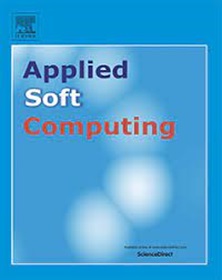利用信息瓶颈和对抗训练实现鲁棒的中文临床命名实体识别
IF 7.2
1区 计算机科学
Q1 COMPUTER SCIENCE, ARTIFICIAL INTELLIGENCE
引用次数: 0
摘要
中文临床命名实体识别(CCNER)旨在从中文临床文本中提取具有特定医学意义的实体,是医学数据挖掘的重要组成部分。现有的一些 CCNER 模型可能会假定文本数据完美无缺,并设计复杂的模型来提高其准确性。然而,由于中文临床实体语义的复杂性和标注的专业性,中文临床文本容易包含不规范的错误表述和稀疏的实体标注。这将导致 CCNER 提取的文本特征有噪声或不完整,严重威胁实际场景中识别的鲁棒性。针对这些问题,我们提出了鲁棒中文临床命名实体识别模型(RCCNER)。RCCNER 包括三个基本组成部分:多元文本表示、鲁棒性特征提取和鲁棒性模型训练。在多元文本表示方面,该模型通过整合词嵌入、部首嵌入和字典嵌入来增强特征表示之间的一致性和协作性,以帮助抵御文本噪声。然后,在信息瓶颈和希尔伯特-施密特独立性准则的指导下,鲁棒特征提取压缩了文本表示与提取特征之间的依赖性,同时增强了提取特征与标签之间的依赖性,从而为鲁棒性识别提供了可靠的文本特征。鲁棒模型训练方面利用对抗训练来降低 RCCNER 对噪声干扰和稀疏实体标签的敏感性,从而增强其在实体识别中的鲁棒性。RCCNER 通过文本表示、文本特征提取和模型训练协同增强了抗噪能力。在两个流行的公共数据集上进行的多项实验验证了 RCCNER 的有效性和鲁棒性。本文章由计算机程序翻译,如有差异,请以英文原文为准。
Robust Chinese Clinical Named Entity Recognition with information bottleneck and adversarial training
Chinese Clinical Named Entity Recognition (CCNER) aims to extract entities with specific medical significance from Chinese clinical texts, which is an important part of medical data mining. Some existing CCNER models may assume perfect text data and design complex models to improve their accuracy. However, due to the complexity of Chinese clinical entity semantics and the professionalism of annotation, Chinese clinical texts are prone to contain irregular misrepresentations and sparse entity labeling. That would lead to noisy or incomplete text features extracted by CCNER, seriously threatening the robustness of recognition in real-world scenarios. To address these problems, we propose the Robust Chinese Clinical Named Entity Recognition model (RCCNER). RCCNER comprises three essential components: multifaceted text representation, robust feature extraction, and robust model training. For multifaceted text representation, the model enhances consistency and collaboration between feature representations by integrating word embedding, radical embedding, and dictionary embedding to help withstand textual noise. Then, guided by the information bottleneck and the Hilbert–Schmidt independence criterion, robust feature extraction compresses the dependency between text representation and extracted features, while enhancing the dependency between extracted features and labels, which consequently provides reliable text features for robust recognition. The robust model training aspect leverages adversarial training to diminish RCCNER’s sensitivity to noise disturbances and sparse entity labeling, thereby reinforcing its robustness in entity recognition. RCCNER collaboratively enhances the noise immunity through text representation, text feature extraction and model training. Several experiments on two popular public datasets validate the effectiveness and robustness of RCCNER.
求助全文
通过发布文献求助,成功后即可免费获取论文全文。
去求助
来源期刊

Applied Soft Computing
工程技术-计算机:跨学科应用
CiteScore
15.80
自引率
6.90%
发文量
874
审稿时长
10.9 months
期刊介绍:
Applied Soft Computing is an international journal promoting an integrated view of soft computing to solve real life problems.The focus is to publish the highest quality research in application and convergence of the areas of Fuzzy Logic, Neural Networks, Evolutionary Computing, Rough Sets and other similar techniques to address real world complexities.
Applied Soft Computing is a rolling publication: articles are published as soon as the editor-in-chief has accepted them. Therefore, the web site will continuously be updated with new articles and the publication time will be short.
 求助内容:
求助内容: 应助结果提醒方式:
应助结果提醒方式:


